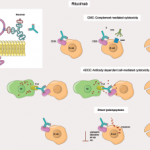Alphavirus and chikungunya infections may manifest with fever associated with conjunctivitis and symmetrical polyarthritis involving small, medium and large joints with a relapsing and remising course, as in rheumatic fever and reactive arthritis.
Infections can cause direct joint infections as well, such as Neisseria gonorrhoeae, Borrelia burgdorferi and Tropheryma whipplei infections, which can present early as asymmetrical, intermittent polyarthritis without gastrointestinal symptoms, then turn into a symmetrical polyarthritis, mimicking seronegative RA.8,9
Recognizing an infectious cause of migratory rheumatism is vital because the management differs from an autoimmune cause.
Spondyloarthropathy: The spondyloarthritides constitute a group of heterogeneous entities (e.g., psoriatic arthritis, reactive arthritis, IBD-associated arthritis, ankylosing spondylarthritis) sharing common characteristics. Psoriatic arthritis and IBD-associated arthritis often present as asymmetric polyarthritis favoring lower extremity joints. However, our patient denied any personal or family history of psoriasis, Crohn’s disease or ulcerative colitis.
Reactive arthritis was high on the differential diagnosis for our patient because of his history of migratory polyarthritis and iritis, as well as his chronic low back pain, but given the lack of preceding infection, gastrointestinal and genitourinary symptoms, and the presence of RF, it was considered less likely.
Ankylosing spondylitis generally presents in young men with long-standing, chronic back pain and prolonged morning stiffness, peripheral polyarthritis and iritis, which were all present in our patient, but the presence of high-titer of RF made it less likely.
Systemic lupus erythematosus (SLE) & other autoimmune conditions: Arthritis in SLE is a very common symptom and typically tends to be migratory, symmetric and non-erosive. It rarely causes joint deformity, but is associated with minor joint effusion, and usually affects the small joints of the fingers and knees.10 Our patient had no skin rash, photosensitive rash, pleuritis or other features to suggest SLE. In addition, anti-nuclear antibodies (ANA) were absent, and patients with SLE rarely get uveitis.
Sarcoidosis: As a heterogeneous, multisystem granulomatous disease that primarily affects the lungs and lymphatic system, arthritis can be found in 15–25% of patients with sarcoidosis.11 Two major types of arthritis have been classically distinguished: acute transient, and persistent or chronic.11
The acute form is more frequent and often the presenting symptom of sarcoidosis. Uveitis, generally in both eyes, is a frequent (20–50%) and early feature of the disease.12
Sarcoidosis was also high in the differential diagnosis with the presence of acute arthritis and uveitis; further diagnostic evaluation, such as chest imaging, would be needed for further investigation.

